- Home
- entertainment
- news
- 59 details you might have missed in all 3 seasons of 'Dark'
59 details you might have missed in all 3 seasons of 'Dark'
Kim Renfro

- Netflix's sci-fi series "Dark" is made up of three total seasons of mind-melting twists and turns.
- We've rewatched every episode to uncover some of the best foreshadowing and other details or references fans might have missed the first time around.
- Warning: Spoilers ahead for all three seasons of "Dark."
Netflix's German original drama series "Dark" came to an end on June 27, 2020. The final episodes revealed how the devastating cycle of events, which unfolded over three total seasons, were a tangle of alternate worlds and wormholes and paradoxes.
Starting with the very first episode, "Dark" was a well-designed puzzle box. There were great moments of foreshadowing, or references and callbacks, that fans couldn't have picked up on with just one viewing. So we're here to retrace the best details — from the pilot episode all the way to the series finale — that you might have missed.
Keep reading to see all the best ones.
Starting with the opening credits of the first season, the mirror-effect on the title card could have been an early nod to the idea of an origin world and the two parallel worlds.
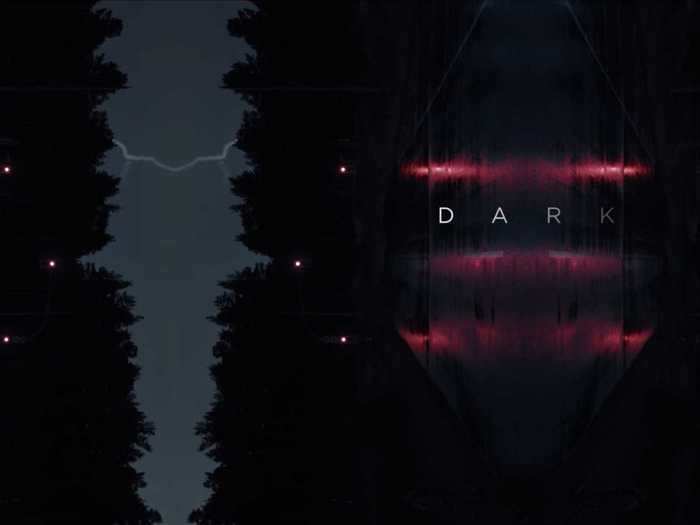
As we finally learn in the final season, there are three separate worlds. There's an origin world, in which H.G. Tannhaus created a time-travel device to try and save his son, daughter-in-law, and granddaughter.
But the creation of that device created a corrupted set of twin worlds: Martha's world and Jonas' world, which in turn created the Adam and Eva personas of Jonas and Martha.
In the very first version of the "Dark" title card, we see three panels of the same street. Two of them are mirrored, representing Martha and Jonas' worlds, with a third one representing Tannhaus' origin world.
The triptych is also emblematic of the 33-year cycle the mirror worlds are trapped in.
Ulrich jokes about how "the Apocalypse is upon us" when he tells Katharina that it's the first day of school and therefore there was a long line at the bakery.
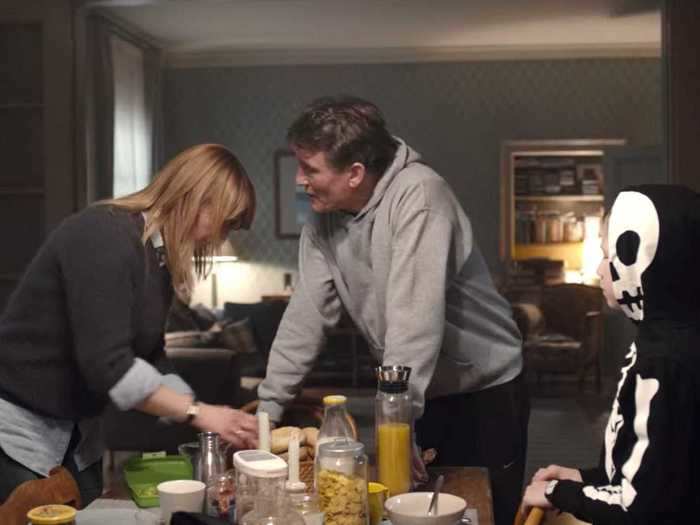
Also in the pilot episode, Ulrich makes a throwaway joke about "the Apocalypse" when he's coming up with an excuse for being late to breakfast. (The real reason he was late was because he was having morning-sex with Hannah.)
It's not until season two that the Apocalypse is mentioned again and again, referencing the explosion that happens at the nuclear power plant when Clausen has the radioactive barrels opened.
The Nielsen kitchen wall of papers and photos has a maze/labyrinth pattern, and a ticket that says "Helge" on it.
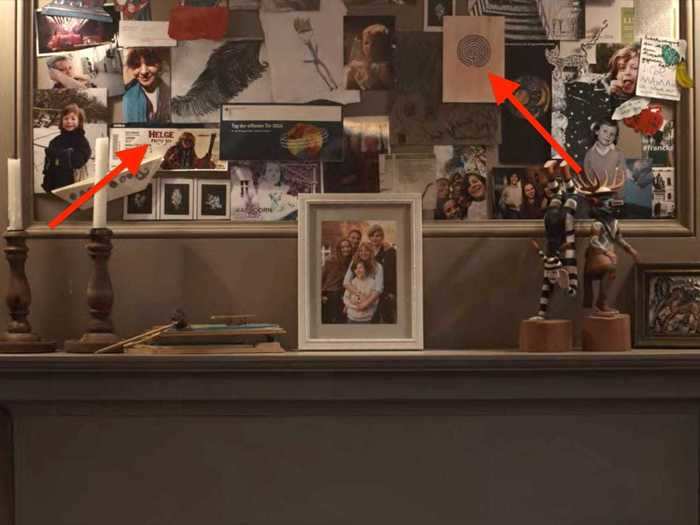
After Katharina smells Ulrich's sweatshirt, suspecting his affair, the camera zooms in briefly on the wall behind her.
There's a drawing of a maze-like pattern hanging there. Throughout season one, we see a lot of references to mazes and labyrinths — a symbol from the story of Ariadne and Theseus (but more on that myth later).
There's also a ticket stub that says "HELGE" in red lettering. Helge is of course a character who comes into play more prominently later in the season when we learn that he was working with Noah to kidnap children and use them to test the time machine in the bunker.
Martha sensed the existence of the parallel world in the pilot episode, when she tells Jonas she had déjà vu.
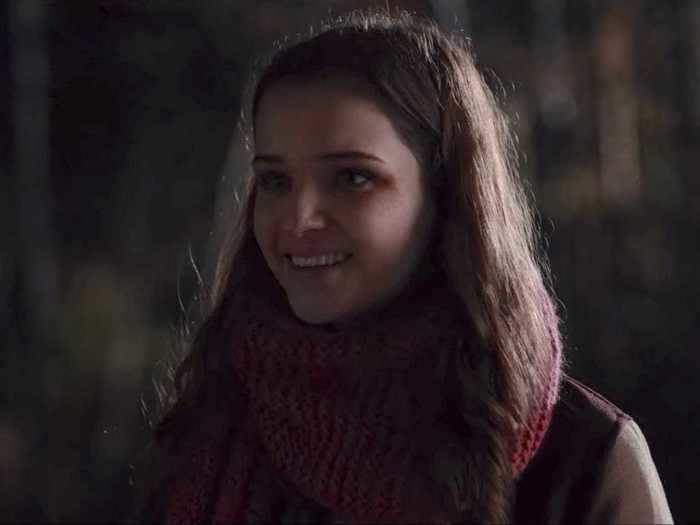
"I think I'm having déjà vu," Martha tells Jonas when they meet in the woods. "The light. The forest. As if all of this has already happened before."
"A glitch in the matrix," he replies.
"What?" she says.
"If the world is a simulation, déjà vu is a glitch in the matrix," Jonas says.
"Or a message from the other side," Martha says. "I read that somewhere."
The first episode of season three, where we learn about Martha's world, is titled "Déjà Vu," and in it, Jonas has a similar version of this conversation with the alternate-version of Martha. The mention of their world being a simulation all the way back in the pilot episode was great foreshadowing of the multiple-worlds reveal that happens in the season two finale.
The song heard in Mads' cassette player, and on TV in the bunker, and again later in season one, has a lyrical connection to the events in "Dark."
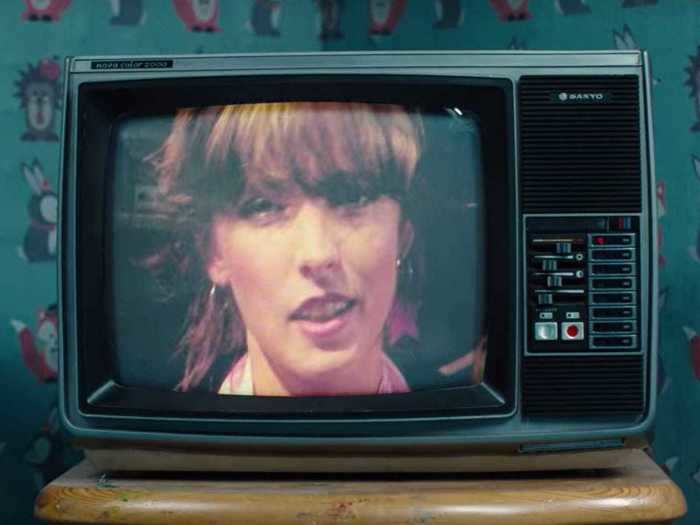
The 1984 song "Irgendwie, Irgendwo, Irgendwann" by Nena is first heard at the end of the pilot episode, but it's recurring throughout "Dark."
It plays again when Helge is driving in the season one finale, moments before his older self crashes a car into him. Then it plays a final time over the credits of the season three (and whole series) finale.
In English, the title translates to "Somehow, Somewhere, Sometime," which has a clear connection to the ideas of characters traveling through time throughout the show. The opening verse is also poetically linked to Jonas and Martha's tragic fates:
Falling through space and time
Towards infinity
Flying moths in the light
Just like you and me
Somehow it starts sometime
Somewhere in the future
There's a picture of a famous sculpture, "Laocoön and His Sons," among Mikkel's paintings in the attic.
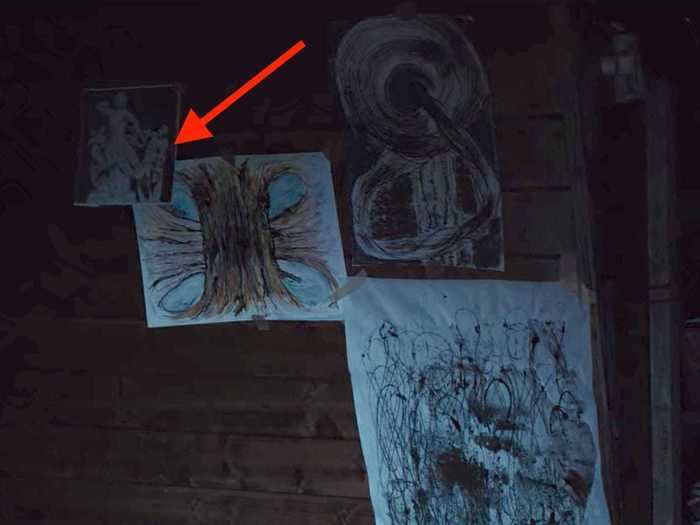
"Laocoön and His Sons" is a very famous sculpture currently on display at the Vatican Museum in Rome. Estimates place its creation in the 1st Century BC. The statue group is based on a Greek myth and it's notable for the masterful conveyance of agony and grief.
Though it's not immediately clear why Mikkel would be using this particular statue as a reference for his painting, it's easy to see the thematic connection between a father and his children dying and the narratives of generational tragedy in "Dark."
In the same episode, we got the first hints about the connection between "Dark" and the Greek myth of Ariadne and Theseus.
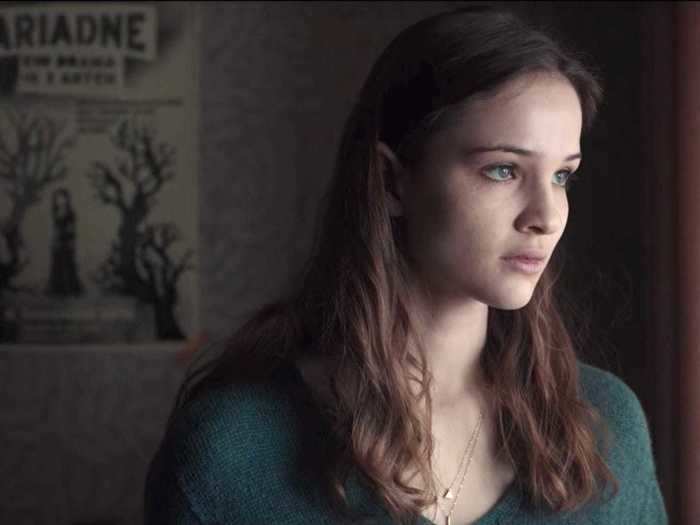
Throughout all three seasons of "Dark," the myth of Ariadne is mentioned or alluded to several times. The poster behind Martha in the above scene was the very first hint at this ongoing theme.
The very same play version of "Ariadne" that Martha performs in her school is the same play we later see young Gustav Tannhaus reading in the 1800s.
In Stranger-Jonas' hotel room, there are pictures of Theseus and the Minotaur. Plus, H.G. Tannhaus' book was published by a company called "Mino Tauros."
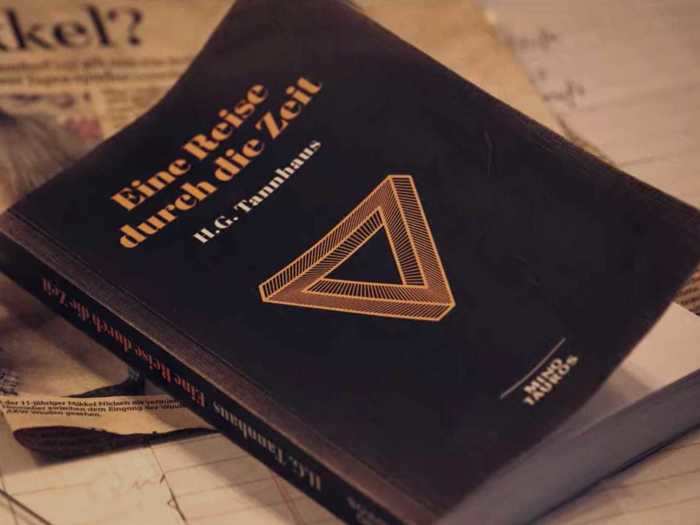
Adding to the "Ariadne" theme, Stranger-Jonas has several pictures of labyrinths and minotaurs on his hotel room walls. But the sneakiest reference to the Greek myth comes from the publishing house responsible for Tannhaus' book.
In the above shot, you can briefly see that "Mino Tauros" is the company's name.
Mads' grave marker has an infinity loop on it, since his body was never recovered.
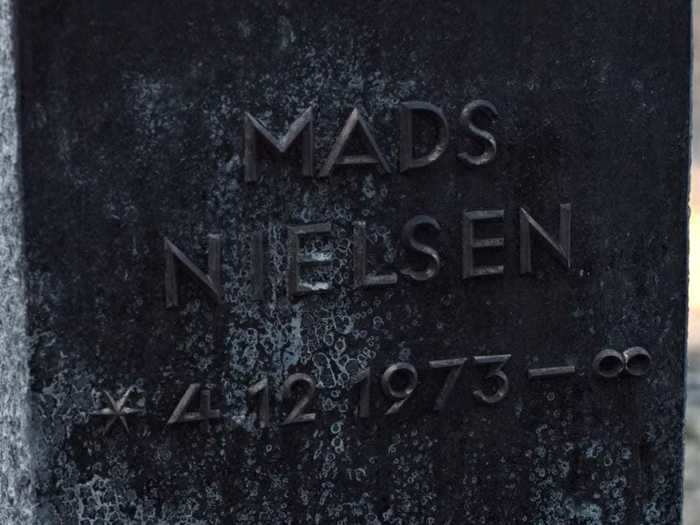
The infinity loop is there in lieu of a date of death, but in retrospect, this looks like yet another hint about the origin connection between Martha's world and Jonas' world, and how they're two neverending loops.
Before Jonas (or the audience) knows that Mikkel is his father, there's a clever exchange between Hannah and Jonas that foreshadows the reveal.
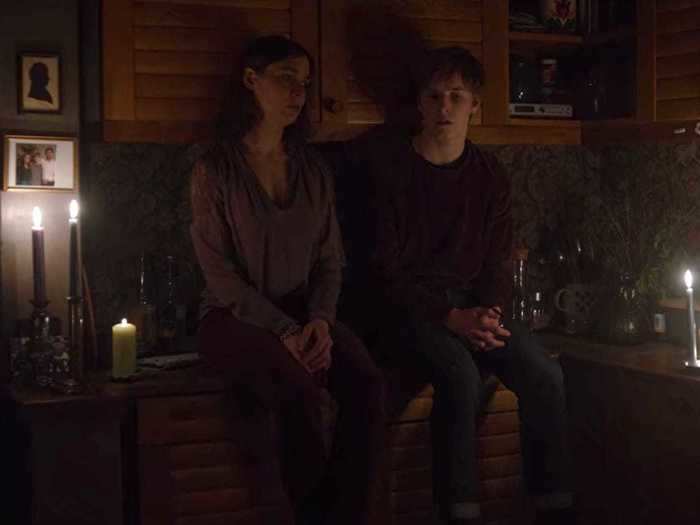
After Mikkel vanishes, Hannah and Jonas talk in their kitchen.
"Do you think he had a secret?" Jonas asks his mother.
"Mikkel?" she responds.
"No, Dad," Jonas says.
They'll both later learn that Mikkel is actually Jonas' father, which makes this small misunderstanding much more meaningful upon a rewatch.
In one of the school scenes, in episode four, the teacher is referencing author Johann Wolfgang von Goethe, whose famous play "Faust" has connections to "Dark."
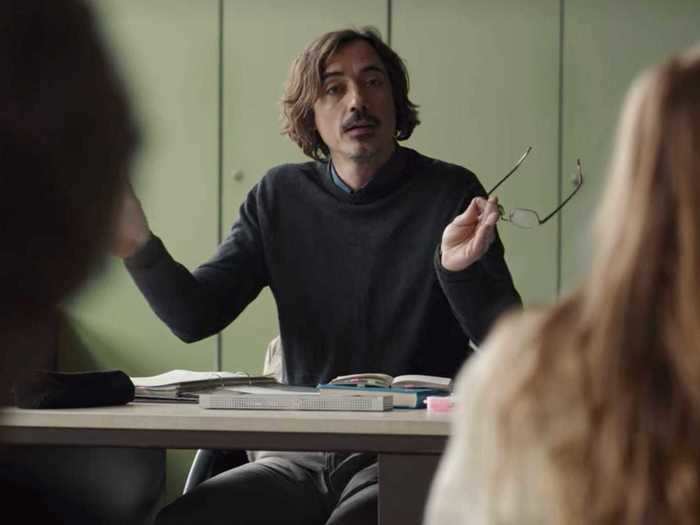
In the fourth episode, Magnus and Franziska's teacher is discussing German author Johann Wolfgang von Goethe. His seminal work was the tragic play "Faust," a story of a man who makes a deal with the devil. Faust trades his soul for knowledge and power, a story that has parallels to Bartosz and Noah in seasons one and two.
Later in season one, which H.G. Tannhaus and Stranger-Jonas discuss the importance of the number 33 and how that the age at which the Antichrist's reign begins. Then the scene immediately cuts to Noah standing outside of Winden's church.
Another odd but probably meaningful connection to "Faust" is the poodle Claudia loses in 1953 and then finds again in 1986. The dog's name is Gretchen, which is the same name as Faust's love interest in the fictional story.
The teacher also provided the first hint about Martha and Jonas' parallel worlds, and at the same time we saw the infinity loop symbol again.
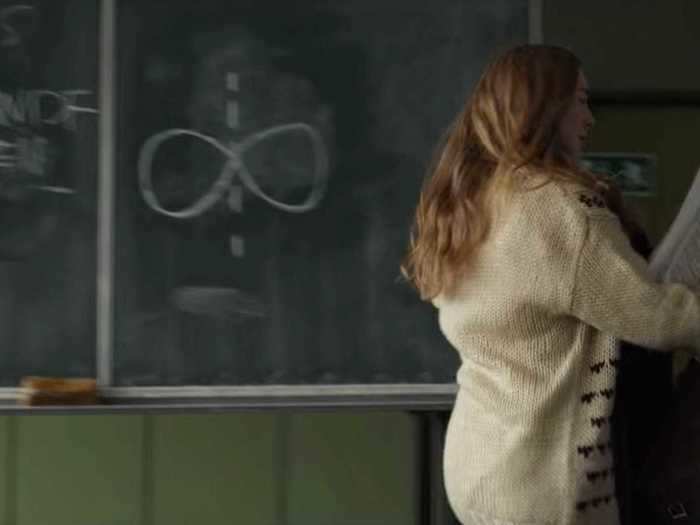
"Symmetry is a special kind of doubling," the teacher says. "The repetition is mirrored along a central axis. So the repetition begins at an imaginary center point and branches off in two opposing directions."
As he's speaking, Franziska passes by the infinity symbol drawn on a chalkboard. This is yet another good foreshadowing of the mirror worlds and how the people in those worlds are trapped in a repeating loop of events.
In episode five, we meet Noah for the first time and hear that he's with St. Christopher's Church — the patron saint of travelers.
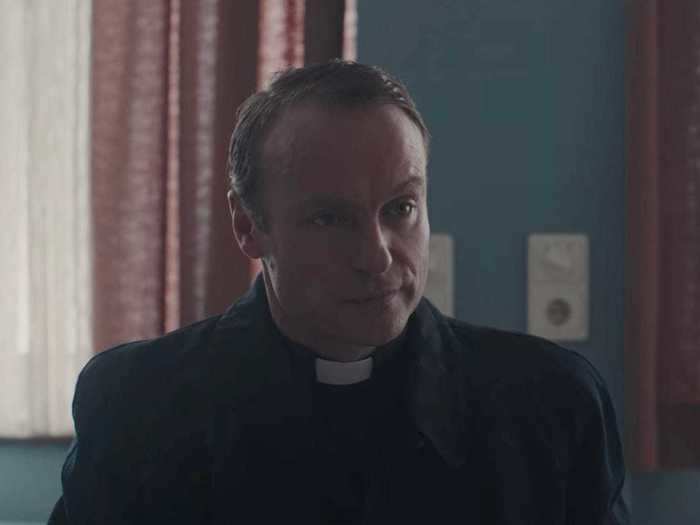
Long before we know who Noah is, or what he wants, we were given a small hint towards the fact that he was a time traveler.
In season two and three, we see that Adam built his home base underneath the St. Christopher Church in Winden. There is also a necklace, with the St. Christopher pendant, that comes into play (but more on that in a bit).
Rewatching season one, it's neat to hear this small nod to the bigger story around the church and time travelers mentioned.
In season one, young Ulrich and Hannah discuss a movie he loved, but never name it. He was referencing "The Breakfast Club," which would have come out the year before in the US.
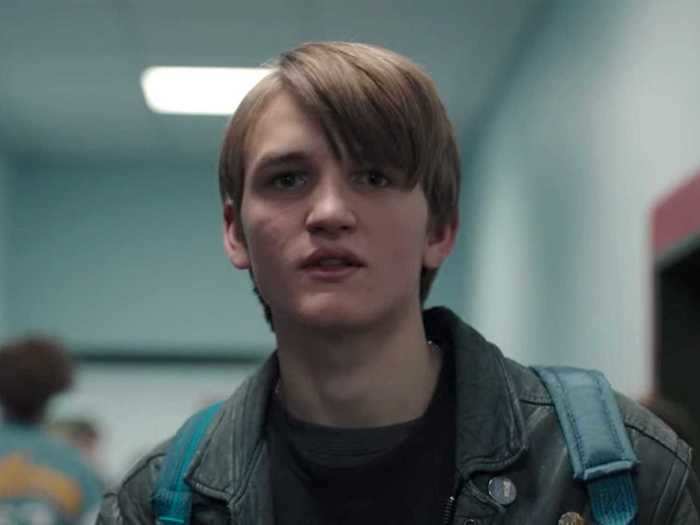
In the first season, as we transition from 2019 to 1986, we hear young Ulrich saying "...and then she says 'when you grow up your heart dies.'"
If fans were wondering what movie that was from, the line is spoken by Allison (played by Ally Sheedy) in the 1985 movie"The Breakfast Club." Hannah mentions that she'd want to see the movie with him, but before he can answer he goes to hold hands with Katharina.
Charlotte mentions her grandfather being obsessed with "Nietzsche's eternal recurrence" long before we know she was raised by H.G. Tannhaus.

In season one, episode five, Charlotte mentions the 33-year lunar-solar cycle and how her grandfather was into the concepts of the Big Bang, Big Crunch, and Nietzsche's eternal recurrence.
At the time, we didn't know she was talking about Tannhaus. It's only in season two that his relationship to her is explained, and only in the season three finale that we understand just how big of a role Tannhaus played in the entire creation of the two mirror worlds.
Martha's monologue in "Ariadne" is the first time we hear about the idea of "severing the knot" — which becomes a recurring idea in season three.
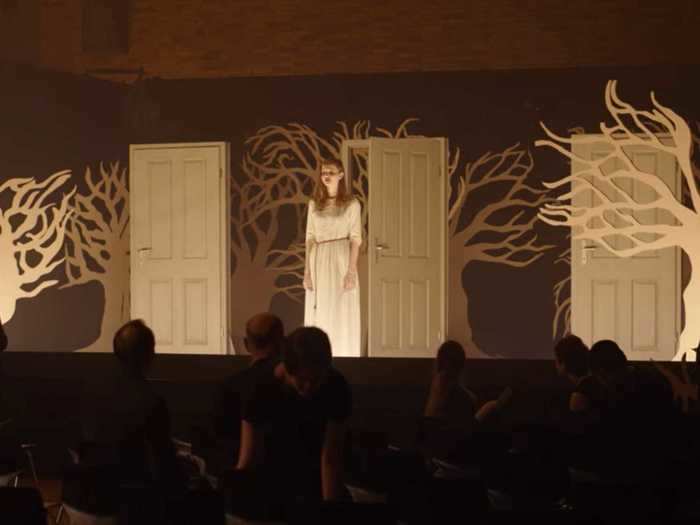
In Greek mythology, Ariadne is the daughter of King Minos in Crete. Minos placed Ariadne in charge of the labyrinth on the island, which houses a Minotaur at its center and is used for ritual sacrifice.
According to the myth, the hero Theseus came to the labyrinth to kill the Minotaur. Ariadne fell in love with Theseus and decided to help him navigate back out of the maze by giving him a ball of thread. After they escape Crete, however, Theseus abandons Ariadne.
In Martha's Ariadne monologue, she speaks about her mother and how Theseus left her.
"The spinning wheel turns, round and round in a circle," she says. "One fate tied to the next. The thread, red like blood, that cleaves together all our deeds. One cannot unravel the knots. But they can be severed. He severed ours, with the sharpest blade. Yet something remains behind that cannot be severed. An invisible bond."
This is not only an early hint at how Adam is fighting to break the knot between the two worlds, but also about how the final scene of the show gives lingering hope that Martha and Jonas will find a way to exist in the origin world, too.
Also, there are three doorways behind her on stage in the above scene. This is yet another nod to the three worlds that intersect throughout the show.
Tannhaus mentions the importance of not just dual worlds but a third "dimension" in season one.
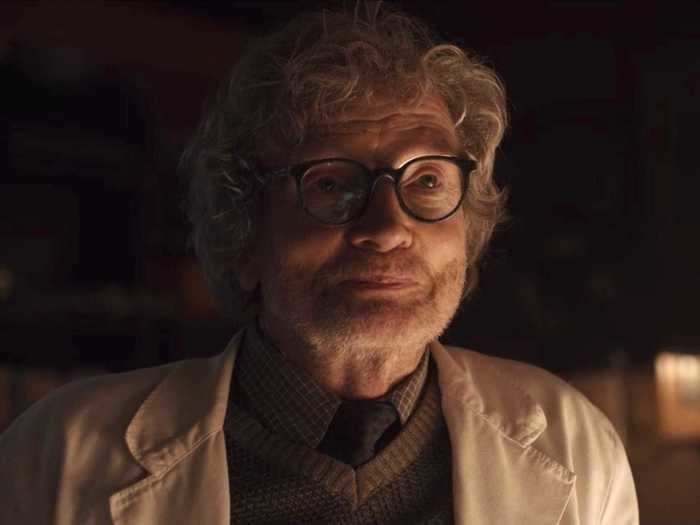
In one of the season one scenes that takes place in 1986, Tannhaus explains black holes to Jonas.
"Our thinking is shaped by dualism," Tannhaus says. "Entrance, exit. Black, white. Good, evil. Everything appears as opposite pairs. But that's wrong. Have you ever heard of the triquetra? Nothing is complete without a third dimension. There isn't only up and down. There's a center, too."
Though at the time it seems like this is only relevant to the idea of time travel to the past, present, and future, in retrospect it's a major clue about the existence of three distinct worlds.
Another "glitch in the matrix" moment happens when Magnus and Franziska see a Raider candy bar commercial on TV.
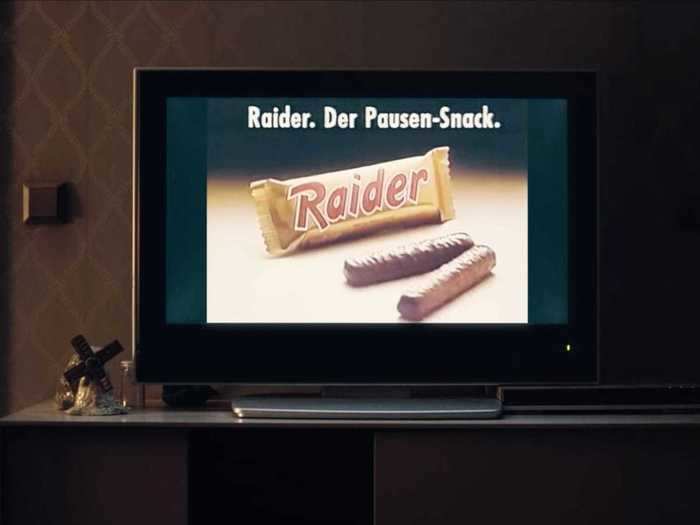
Raider was the name used for Twix candy bars in Germany up until the year 1991, as the official "Dark" website explains.
The presence of Raider candy bar wrappers in Winden in 2019 were an early hint about time travelers coming to the town from the year 1986. Helge is the most notable person who loves Raider candy bars, and he's the one who is likely leaving behind the wrappers whenever he comes to kidnap another child.
So why would there be a Raider commercial on TV in 2019?
Magnus and Franziska see the ad in the season one finale, when all the electricity is going haywire because adult-Jonas is creating the wormhole inside the cave passageway. It's possible that the commercial was an early hint about crossover worlds.
In the first episode of season two, Stranger-Jonas looks at the spot on the floor where Martha will die.
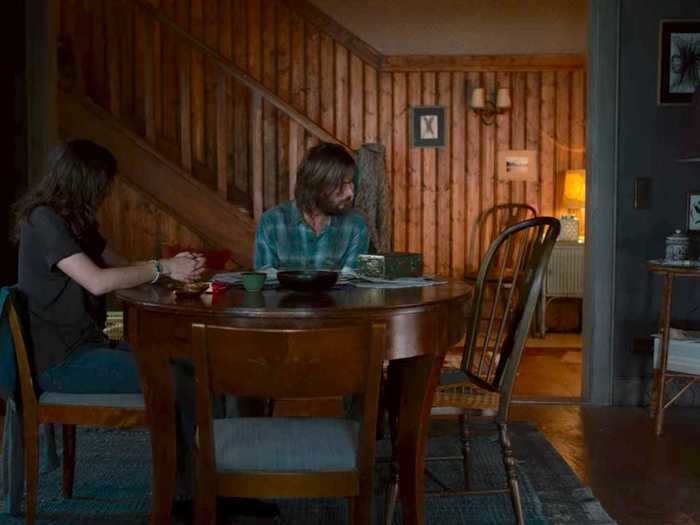
When Hannah asks Stranger-Jonas why he's there, he turns to look down at the floor. At the time, this gesture was a mystery.
It wasn't until the season two finale that we watched as Adam shot Martha, and she died in the younger Jonas' arms in the exact place in the dining room.
Similarly, Stranger-Jonas was shocked when he saw Hannah with Aleksander's gun, because that's the same gun that Adam used to shoot and kill Martha.
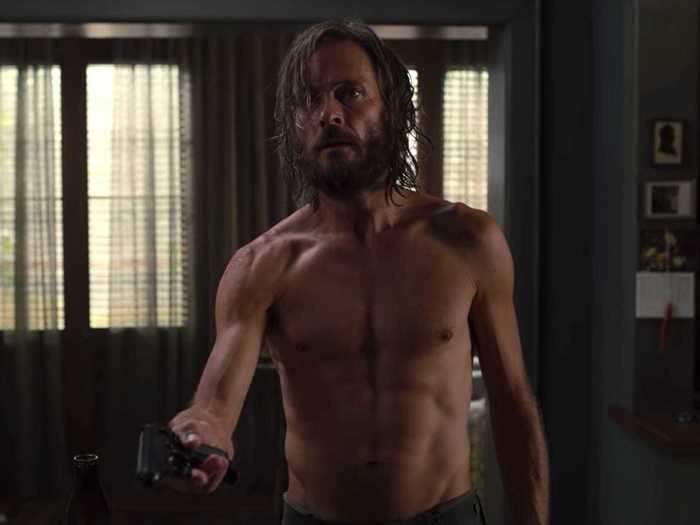
That gun made its way throughout time after Aleksander (whose real name is Boris) brought it to the town of Winden in 1986. Hannah took the gun and kept it until Stranger-Jonas used it to force Martha into the bunker in the season two finale.
The gun then eventually made its way to the Sic Mundus group, where Noah eventually tried to use it to kill Adam. Then Agnes shot Noah with it, killing him, and then Adam used the same gun to kill Martha in 2020.
Young Elisabeth found a book in H.G. Tannhaus' shop that foreshadows the reveal of Adam and Eva's worlds with the origin world in the center.
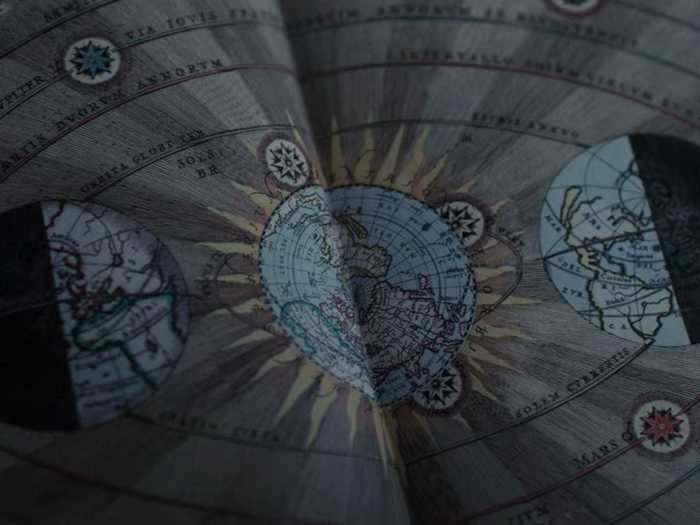
Among Tannhaus' dusty objects was a book about Hermeticism (the philosophy connected to the phrase "Sic Mundus Creatus Est") as well as the picture book above.
In the full panning shot of the artwork, a man and woman blow from either end of the pages towards the three worlds. The two side worlds are shadowed, while the middle one (the origin world) is at the center of everything.
We see that same depiction in the Sic Mundus group's headquarters a few episodes later.
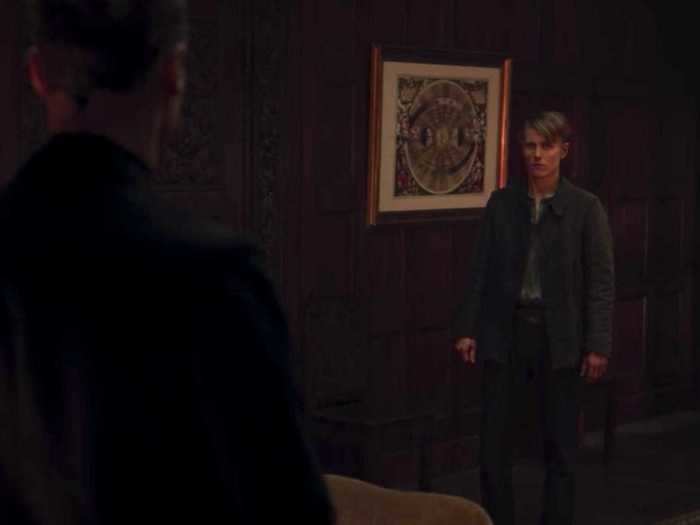
Young Noah is looking at the creation drawing when speaking with his older self and asking about the prophecy Adam believes in.
One of young Regina and Claudia's last conversations was about a book titled "Ghosts," which is a fictional story about time-traveling children.
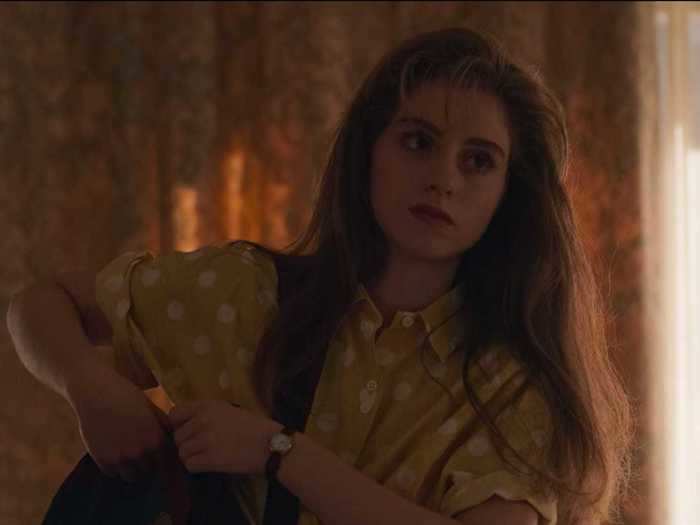
In the episode, which itself is titled "Ghosts," young Regina is looking around the house for her book ("Ghosts") while Claudia gets ready in the morning.
In "Ghosts," a real book written by Antonia Barber in 1969, two sets of children travel backwards and forwards in time trying to alter a tragic series of events. It's an apt (if anguishing) book choice for young Regina, who was left behind by Claudia for decades when her mother started time traveling and trying to find a way to save future-Regina's life.
When Agnes confronts Noah in the St. Christopher's Church, the numbers 47, 904, 24, and 182 are on a small board in the background.
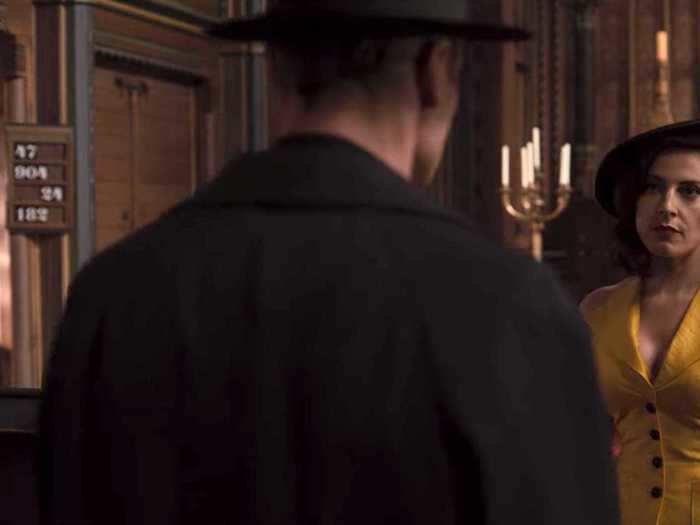
The number 24 might be there to signify Matthew 24 from the New Testament, in which Jesus warns them of "the destruction of the temple and signs of the end times." Noah was working for Adam at the time, whose primary goal was to eliminate his world from existence.
The number 182 might be a reference to Lamech, a man featured in Genesis 5:28 who had a son when he was 182 years old. That son's name? Noah.
In season two, Torben Woller told Clausen that Hannah could have married anyone. In the origin world, Torben winds up with Hannah.
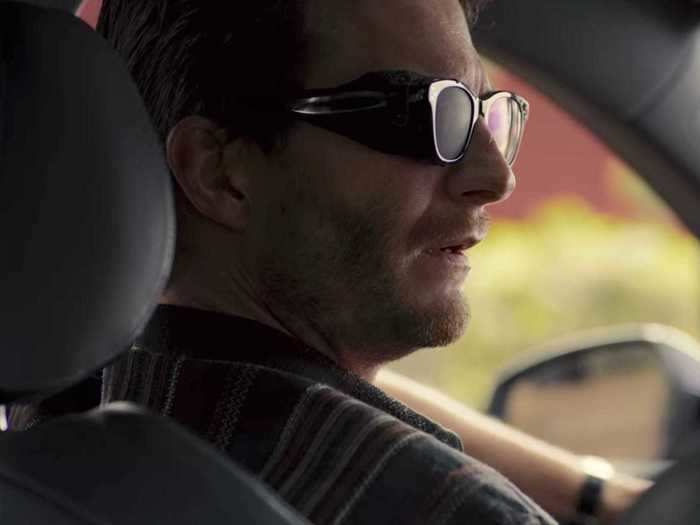
"She was so pretty, she could've had any man she wanted," Woller told Clausen.
Upon a rewatch, this scene seems to be a small way of foreshadowing that Hannah and Torben would wind up together in the origin world.
The painting Adam has in the Sic Mundus headquarters is "The Fall of the Damned" by Peter Paul Rubens.
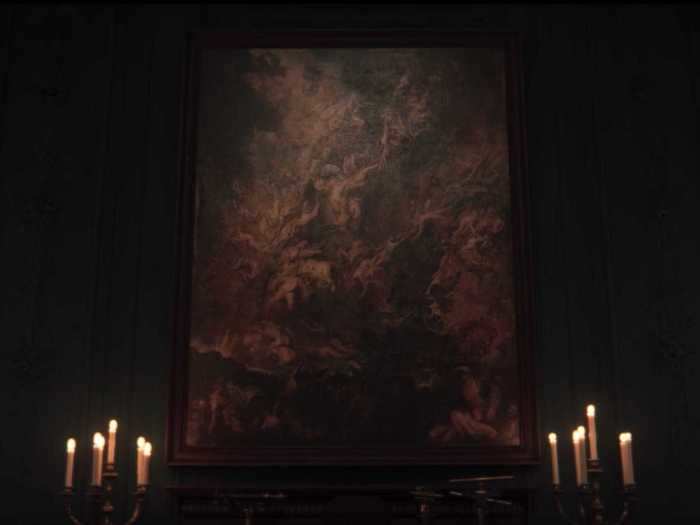
Throughout season two, we see Adam standing in front of a painting by Peter Paul Rubens called "The Fall of the Damned" (or "The Fall of the Rebel Angels").
In the Book of Revelation from the New Testament, the archangel Michael leads a war against Satan. Satan is cast him down to Earth along with other fallen angels, where he continues to try and "lead the whole world astray."
Adam likely considers himself to be something akin to a fallen angel — once devoted to Claudia and saving Martha, he's eventually turned to the philosophy that his world (and Martha's) must end. His entire life is devoted to the undoing of the world, at any cost. (At least right up until the moment when Claudia tells him about the origin world).
In that same scene when we see the Rubens painting for the first time, Adam gives a hint about his true endgame.
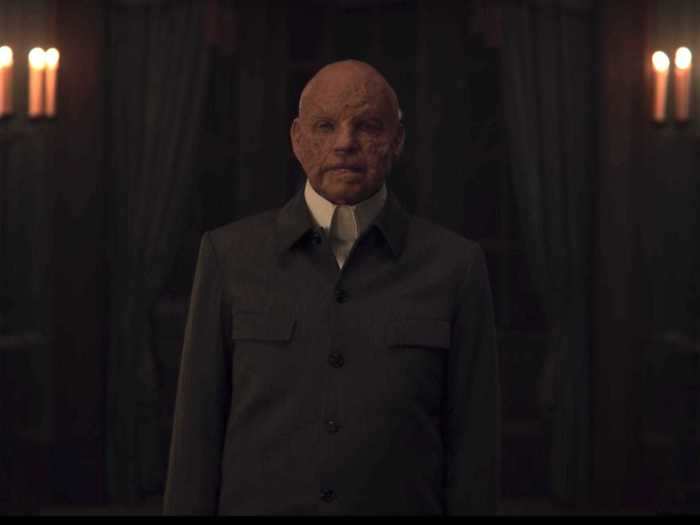
Throughout season two, Adam never tells Jonas the whole truth: That his goal is to destroy both worlds. But he does tell Jonas that he represents "everyone's end."
"Don't worry, it will come to an end. That can't be avoided. Your end, my end. On closer inspection, it's everyone's end."
By the final minutes of "Dark," most of the people in Winden we'd come to know had ceased to exist. Turns out, Adam was warning us all along.
Stranger-Jonas had a terrifying sex dream about Martha that foreshadowed the "origin."
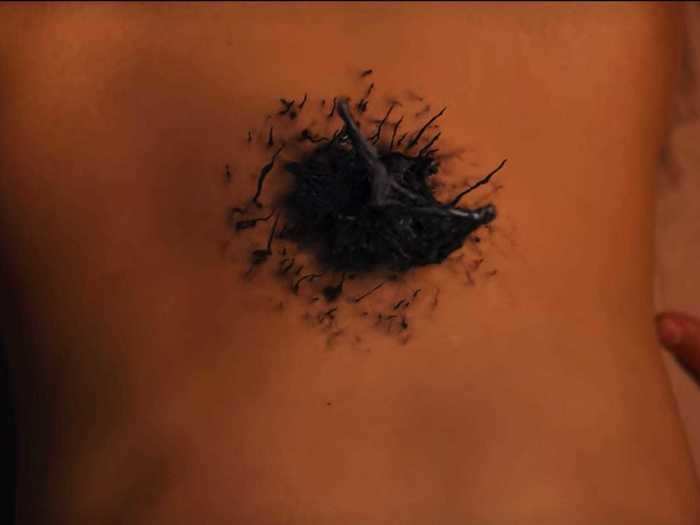
In the opening of season two, episode five, Stranger-Jonas has the same recurring dream we'd already seen Jonas and Martha have (in which they have sex — just as we'll see happen in world two in season three).
But in this version of the dream, they stop and look at Martha's lower torso, where a black blob — like a miniature version of the God particle portal — is emerging from her womb.
It's not until halfway through season three that we learn about the origin, also called the Unknown: Martha and Jonas' child who goes on to father Tronte Nielsen and the entire corrupted family tree in both worlds.
In season two, we also got our first peek at the circular time travel device used by Eva's group in world two.
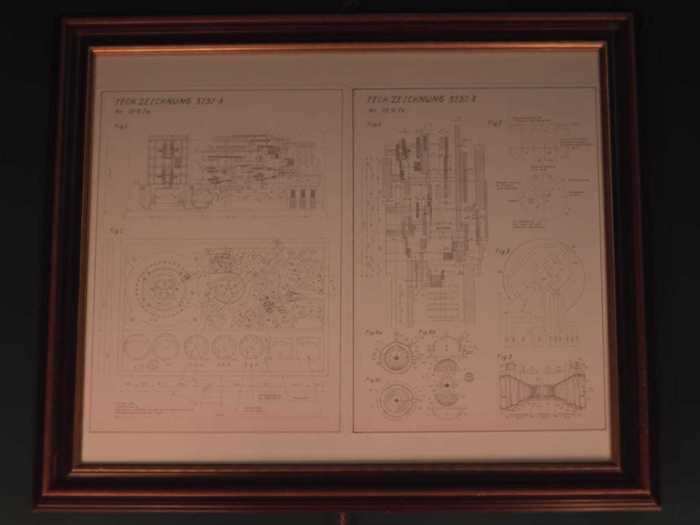
The blueprint for the machine was on Adam's wall. According to the official "Dark" website, this is called the "golden time travel sphere." It not only lets people travel to any year they want — not just 33 years backwards or forwards — but to the other worlds.
Magnus and Bartosz all joked about a dead woman in the lake while swimming in 2019, and we learned later that Katharina's body was dragged into the lake in 1987.
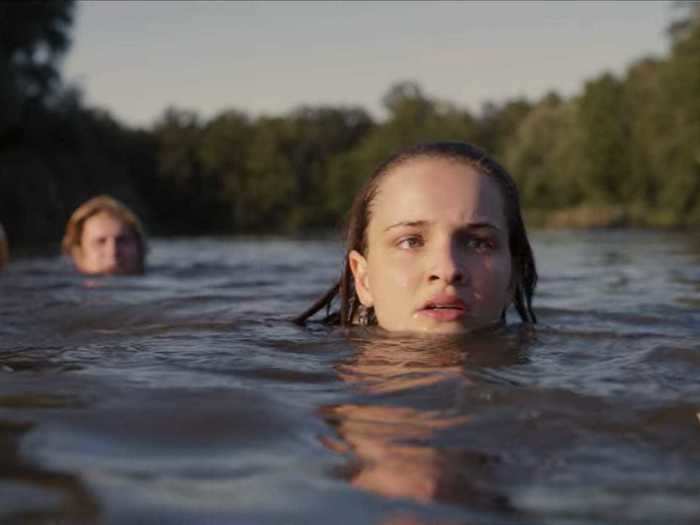
Among the more horrifying scenes in all of "Dark" came in season three when Katharina, who had traveled back in time to try and rescue Mikkel and Urlich, was bludgeoned to death by her own mother. Helene killed the adult Katharina, and dragged her body into the lake.
This meant that years later, in 2019, Katharina's children were swimming above Katharina's dead body while Bartosz told a legend about the woman in the lake who would pull people down with her.
Just before dying in 1987, Katharina pulled Helene's St. Christopher pendant off her neck and it was left in the sand.
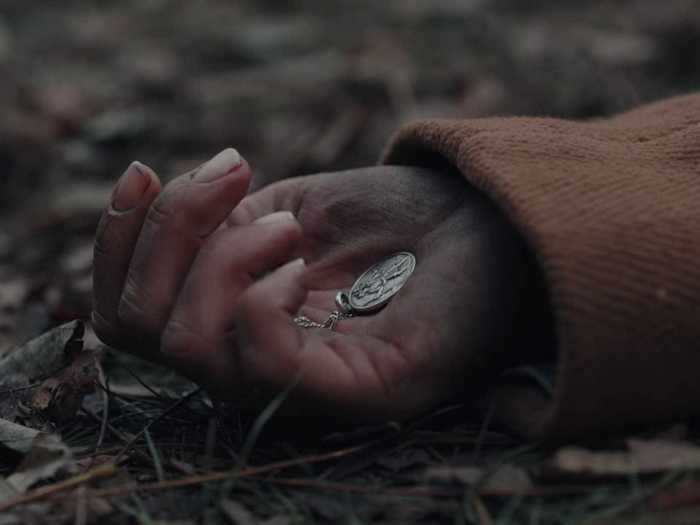
Decades later, Jonas found that necklace and Martha put it on a chain for him.
The necklace, like the gun mentioned earlier, has a trippy pathway through time. It was first given to Hannah in 1954 by Egon, the man she was having an affair with.
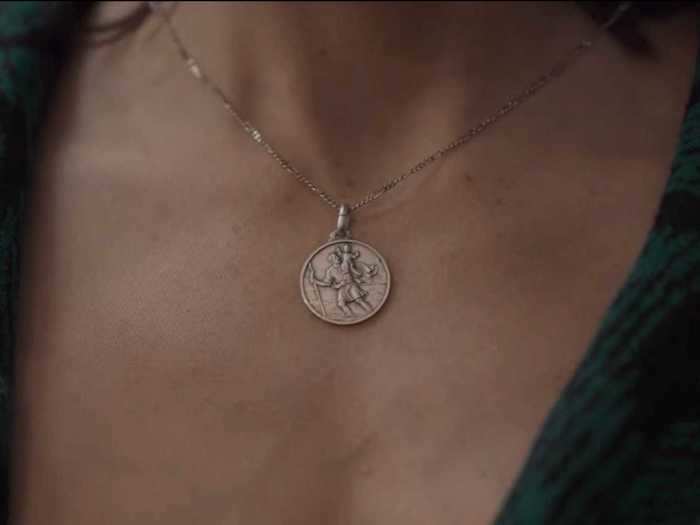
When Hannah got pregnant with Egon's baby, she initially wanted an abortion. Hannah went to Fran Obendorf's (the great-grandmother of Erik Obendorf, the red-headed boy who went missing in 2019). While there, Hannah met young Helene, and told her her name was Katharina. Hannah left the St. Christopher necklace for Helene, who would then grow up to have a daughter of her own and name her Katharina.
Years and years later, that necklace would be found by Jonas, and eventually gifted back to Martha — Helene's granddaughter and Hannah's great-great-great-great-granddaughter (since Hannah's daughter Silja eventually led to the Nielsen line).
Funnily enough, Egon asked Hannah if she knew Agnes Nielsen in season two, before she (or we) knew Hannah was actually Agnes' grandmother.
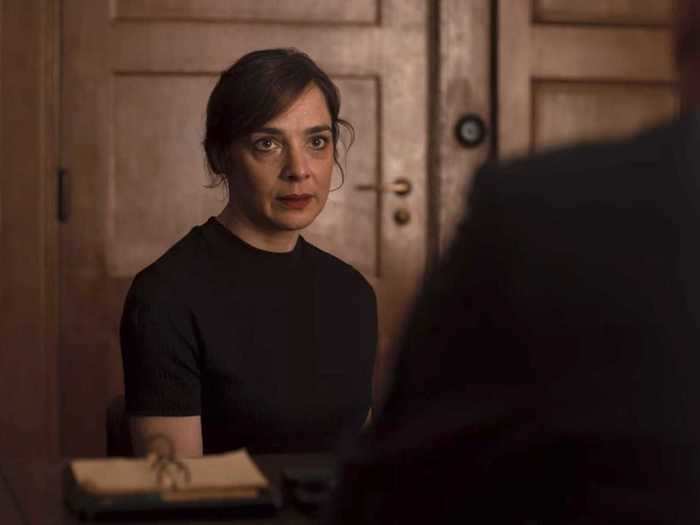
When Hannah first traveled back to the 1950s, she met Egon and told him her name was Katharina Nielsen. This prompted him to ask if she knew Agnes, who was then a grown adult living with Egon and his family.
It's not until late in season three that we learn Hannah is Agnes' grandmother. Hannah's future daughter Silja became a time traveler too, and went back to 1890. There she met Bartosz, and gave birth to Agnes.
Claudia gave a hint about Martha's world (world two) when she spoke to Jonas in season two.
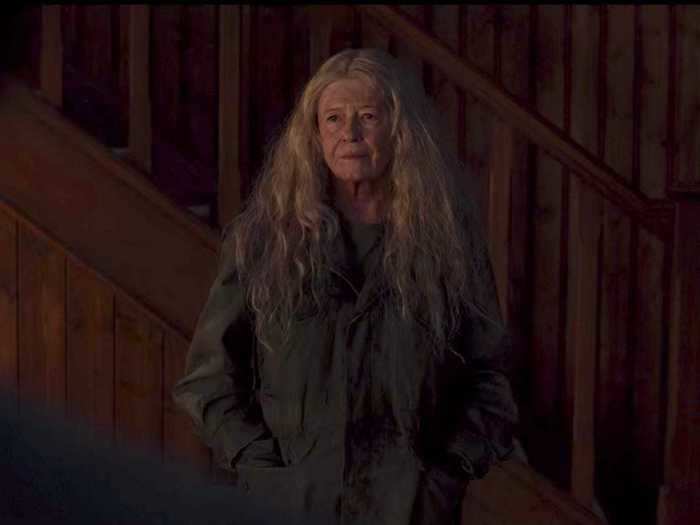
When Jonas told the old Claudia that he would rather not exist if it meant Mikkel (his father) could live, she gave him a cryptic warning.
"I have seen the world without you," she said. "Trust me, it's not what you're expecting." At the time, this made little sense. But by season three, we understood that Jonas didn't exist in the second world, Martha's world, and Claudia had spent a lot of time there. She knew that the same cycle of tragic events would unfold there, with or without Jonas.
Clausen says someone sent him an anonymous letter telling him he'd find answers about his brother's death in Winden. That letter-writer was almost certainly the Unknown.
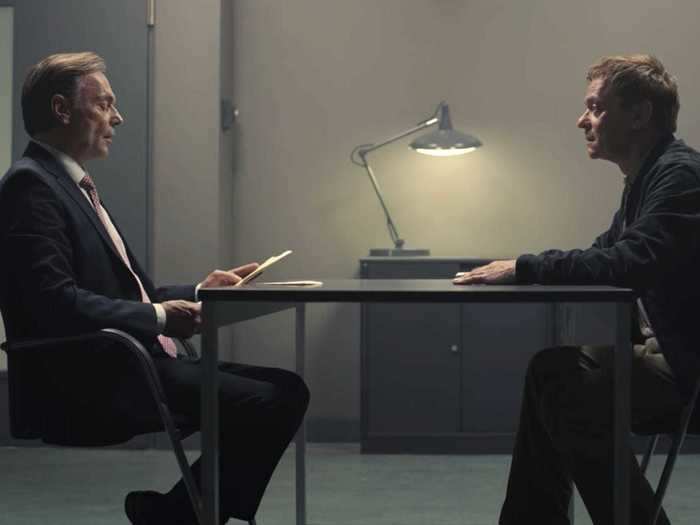
In season two, episode seven, Clausen tells Aleksander about a letter he received tipping him off.
"He that has eyes to see and ears to hear may convince himself that no mortal can keep a secret," the letter read. "If his lips are silent, he chatters with his fingertips. Betrayal oozes out of him at every pore. You'll find the answers concerning your brother in Winden."
Though the show never explicitly says who wrote the letter, it was very like the Unknown (Martha's child).
In season three, the Unknown repeats that same quote (which is from Sigmund Freud) just before killing Gustav Tannhaus.
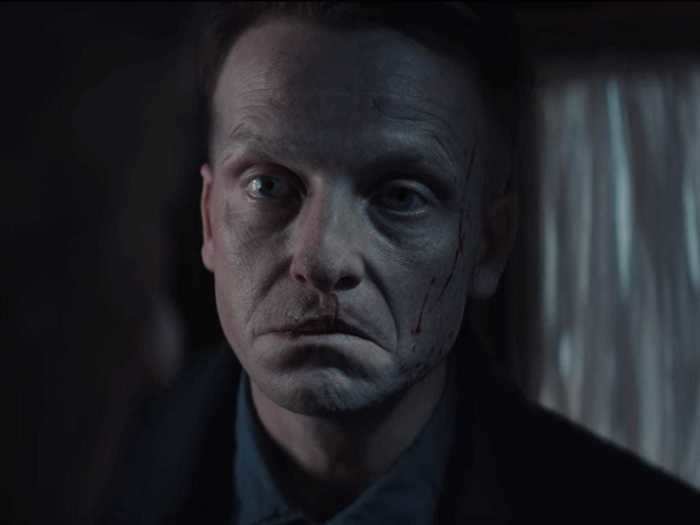
The Unknown says this same line to Tannhaus inside the carriage. Tannhaus was going to send a telegram, spreading word that time travelers were real. The Unknown killed him in order to preserve Martha's world and the order of events.
We saw that the Unknown was used by Martha to maintain the cycle, which means he was probably the one to write to Clausen and ensure that the power place was investigated. Clausen then ordered the radioactive barrels opened, releasing the God particle.
In Martha's world, where there is no Jonas, her boyfriend is a guy named Kilian instead. He was first seen in season one with Martha in the "Ariadne" play.
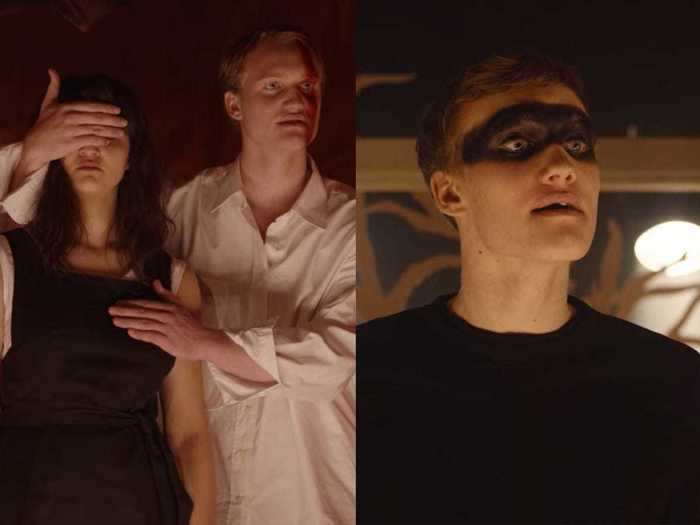
The Kilian in Jonas' world didn't appear other than the single play scene, but both young men are played by the same actor (Sammy Scheuritzel).
This is just one more neat link between the "Ariadne" play and Martha's fate in both worlds.
In Martha's world, Magnus starts telling a spooky story about the caves 100 years ago. That's almost exactly the time period when Sic Mundus was building the cave passageway.
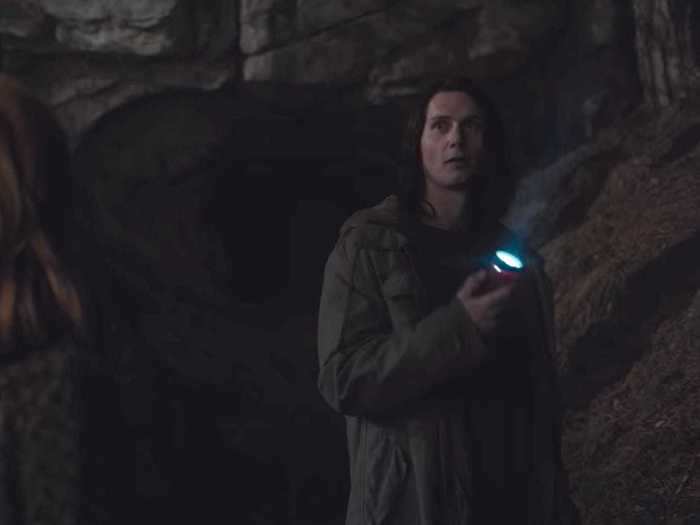
"About 100 years ago, just after the war, they did experiments in the caves," Magnus starts saying.
In Martha's world, this scene takes place in 2019. In Jonas' world, Adam and the Sic Mundus group were building the time-traveling passageway in 1921. The most notable scene involving that happened at the start of season two, when young Noah killed Bartosz — his own father — with an axe after they had been working in the caves together.
In Martha's world, she sees a vision of herself in a white collared dress in the woods. This is the outfit Martha wears in world one on the night she and Jonas had sex for the first time.
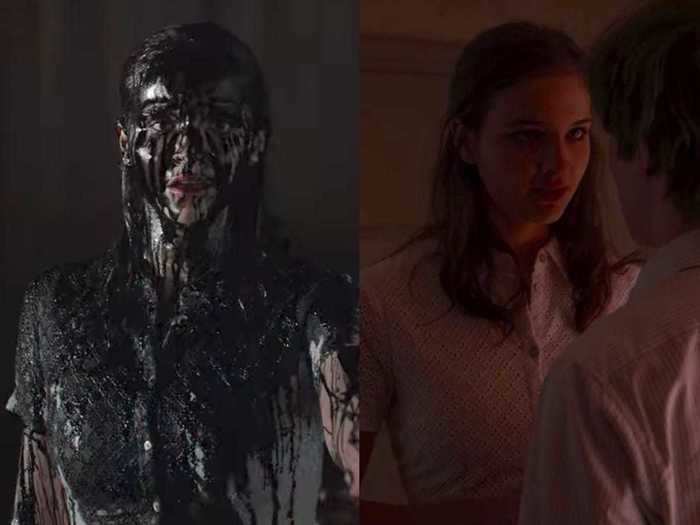
Martha never wears this outfit in any of the world two scenes, which means it's likely a crossover vision from Jonas' world.
In Jonas' world, Martha was wearing this white dress at Katharina and Ulrich's anniversary party. That was the night when Martha gave Jonas the St. Christopher necklace, and when they had sex for the first time.
The next day is when Jonas' father died by suicide, and their tragic cycles began.
That dress makes an appearance again when Jonas has a dream that his Martha, from world one, is sleeping behind him.
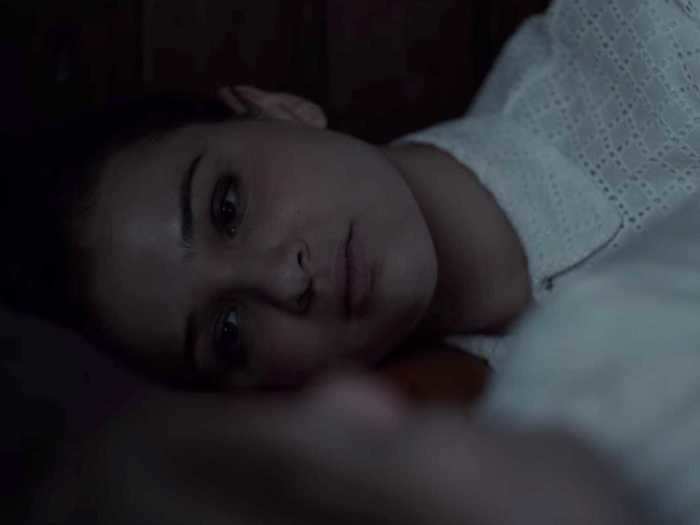
Jonas also sees a vision of Martha in this dress. This time the vision occurs the morning after Jonas has sex with Martha-2 (the Martha from world two) and gets her pregnant with the child who will become the origin, aka the Unknown.
Claudia heard a major hint about the loophole in time travel when the radio was playing in 2020.
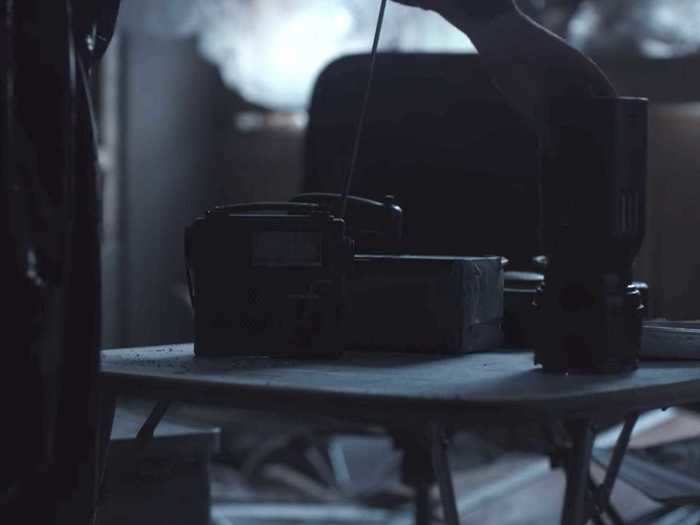
In September 2020, in world one, Claudia was walking through the deserted police station with the radio on in the background.
"Scientists are still looking for an explanation for the events of June 27, 2020, the presumed origin for the catastrophe is assumed to be the small town of Winden," the woman on the radio says. "A French team of scientists believes it possible that our world stood still for a fraction of a nanosecond on June 27, possibly causing the divergence of tidal forces."
In the season three finale, we learn that Claudia figured out how to use that time standstill to exploit the same loophole as Eva and create a second reality in which she is able to find the origin world and figure out how to undo the existence of the mirror worlds.
This radio report was our first hint about that loophole.
In 2053, Elisabeth and Charlotte touched foreheads just like they did in 2019 when they said goodbye.
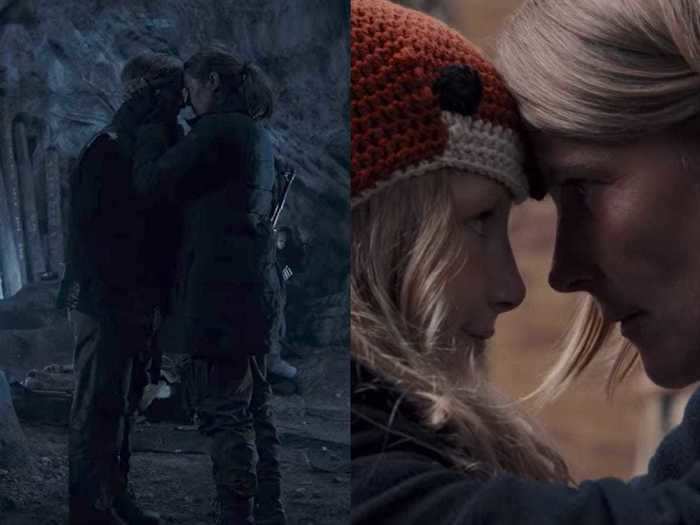
In a sweet callback moment in season three, Elisabeth and Charlotte shared an intimate moment of comfort in the same way they did in season one.
The family tree on Eva's floor revealed that Bartosz was Noah and Agnes' father before we saw those events unfold.
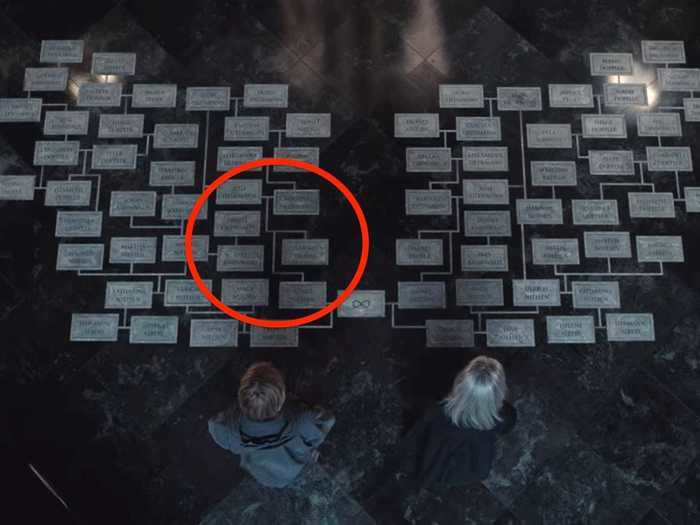
We first saw Eva's massive family tree in episode two of season three. It's not until later in the season that we're shown how Bartosz is actually Noah and Agnes' father, thanks to more time travel trickery from the Sic Mundus group.
But if you paid close attention to the family tree, you would have known this major reveal earlier.
That family tree also has a critical mistake on it: Tronte Nielsen is not Regina's father. Apparently her father was Bernd Doppler.
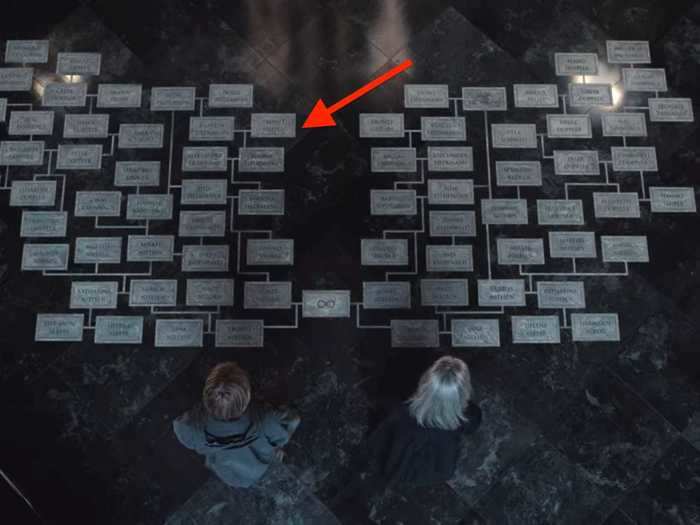
Eva's family tree has Tronte marked down as Regina's father. But in season three, Claudia implies heavily that Tronte was not actually the father of her child.
So who was? According to the official "Dark" website, and the photograph shown in the season three finale, Bernd Doppler was Regina's dad.
This makes a scene between the adult Bernd Doppler and young Claudia much more uncomfortable upon a rewatch.
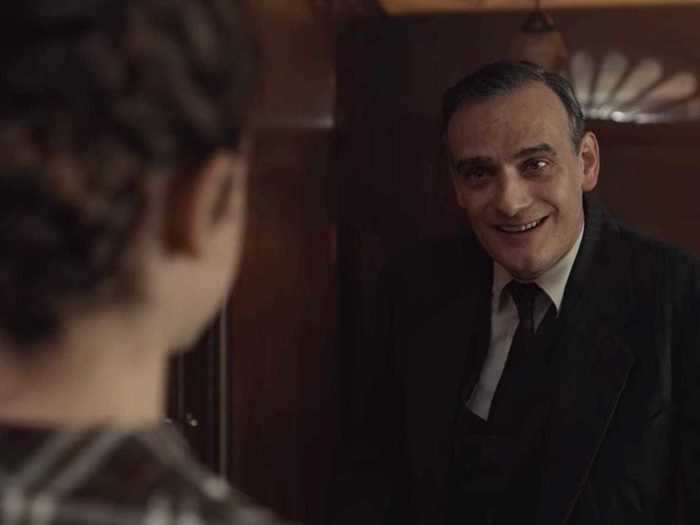
In season three, episode four, we see a flashback to 1954. Claudia, who looks to be around 13 or 14 years old, is tutoring Bernd's son Helge.
Bernd (who is a full-grown adult) sees Claudia in his hallway, and remarks on how smart and pretty and "grown-up" she looks. Then he gives her more money that she's technically owed for her tutoring services.
When she tries to turn down the money, Bernd tells her: "If you really want something, then you must take it."
Overall, this whole scene makes the idea of Bernd and Claudia having sex in the future a very uncomfortable prospect. The show never explains how their relationship would have come to pass. We only see a picture of the happy-looking family in the final scene in the origin world.
The Unknown repeated a quote Bernd Doppler spoke in season one.
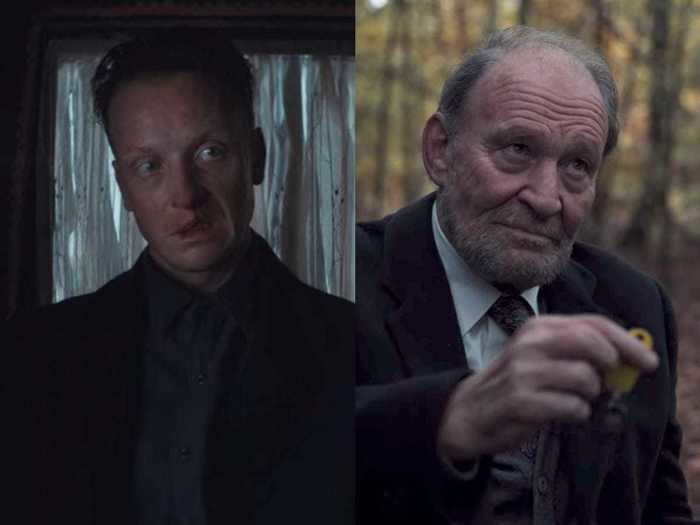
In season one, when Claudia first learns about the nuclear power plant accident, Bernd brings her to the caves where the radioactive barrels are hidden.
"What we know is a drop," he tells her, quoting Isaac Newton. "What we do not know is an ocean."
The Unknown says this quote again right before he kills Gustav Tannhaus in season three, episode three.
Then Adam repeats the quote to Jonas before sending him off to save the Tannhaus family in the season three finale. Jonas in turn then uses the quote to convince Marek that he should turn back from the bridge, thus saving his life.
The scars on the Unknown's lips switch sides when they go to the mirror worlds.
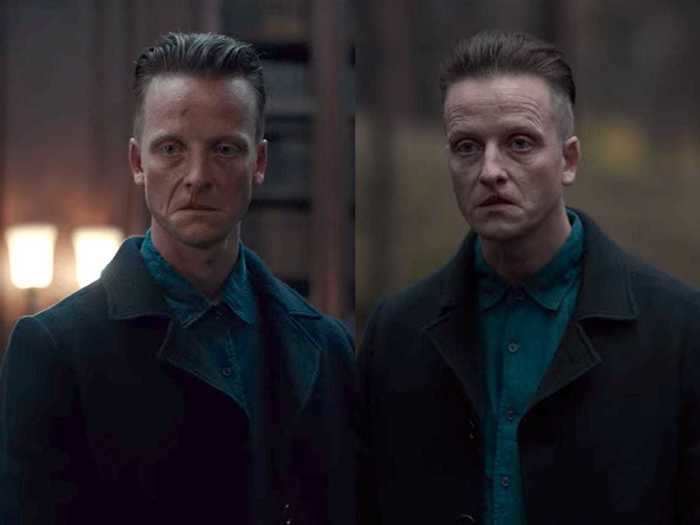
Jonas and Martha's worlds are literally mirrors to each other. That's why the Unknown's facial scars appear to switch sides — it just depends on which world he's in.
In Martha's world, the scar is on the left. In Jonas' world, it's on the right.
This is also why Martha's cheek cut switches sides.
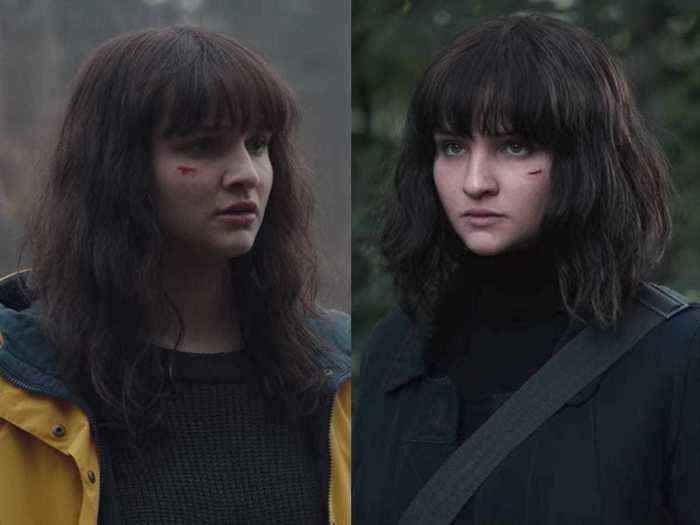
Martha's bloody scratch on her cheek is another stand-out example of this mirroring. In Martha's world, the cut is on her right cheek. But when she travels to Jonas' world, it's on her left.
The doorway in world two says "Erit Lux" instead of "Sic Mundus Creatus Est." That's the name of Eva's organization.
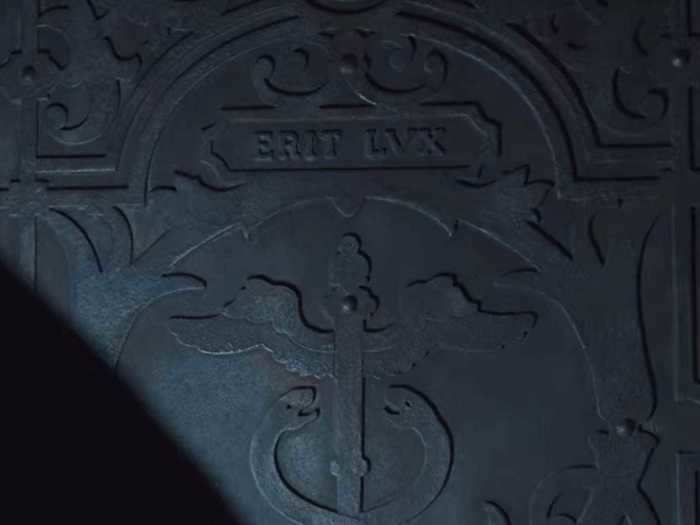
Sic Mundus is the name of Adam's organization in world one (Jonas' world). But in world two, Eva's world, the secret time-traveling society is called Erit Lux instead.
"Erit lux" means "there will be light," according to the "Dark" website.
Just before his death, Eva repeated a line to Jonas that he'd already heard once from Adam.
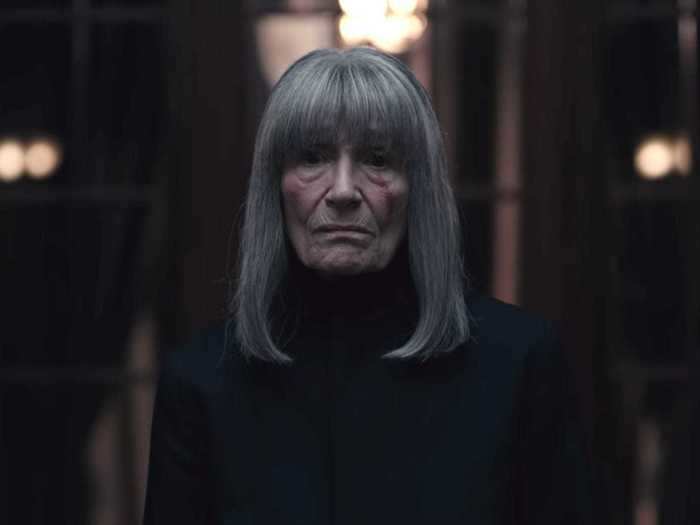
Back in season two, when Jonas first met Adam, his older-self taught him a lesson.
"A person lives three lives," Adam said. "Loss of naivete, loss of innocence, and loss of life."
In season three, just before the other Martha enters the Erit Lux headquarters and kills Jonas, Eva repeats a very similar lesson.
"A human lives three lives," Eva says. "The first one ends with the loss of naivete. The second with the loss of innocence. And the third with the loss of life itself. Yours ends here and now."
The parallels between Adam and Eva, and their torment of Jonas, only grows and grows the more you watch all three seasons.
The first time we see the origin world, the aspect ratio changes.
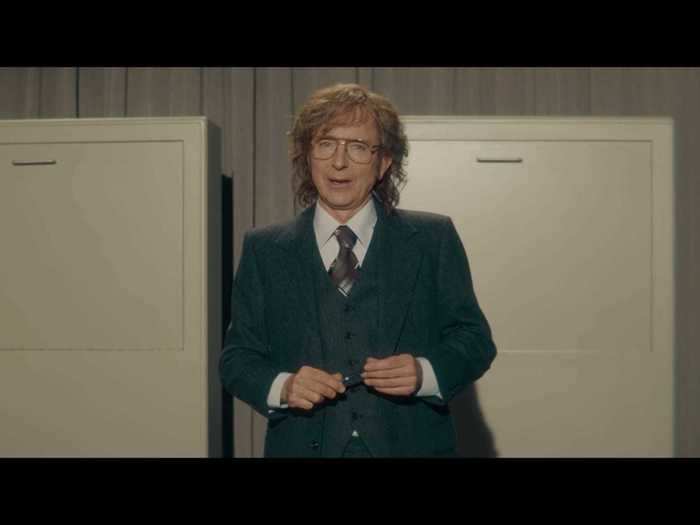
Depending on what platform you watch Netflix, you might not have picked up on the aspect ratio shift for the origin world.
At the start of season three, episode seven, we see H.G. Tannhaus in the origin world for the first time. Black bars appear at the top and bottom of the screen, a visual cue known as letterboxing. This was the first indication that those events were happening in a dimension or world outside of the two we already knew about.
Silja took the dead-Martha's clothes so she'd blend in when she traveled to 1890 to meet Bartosz.
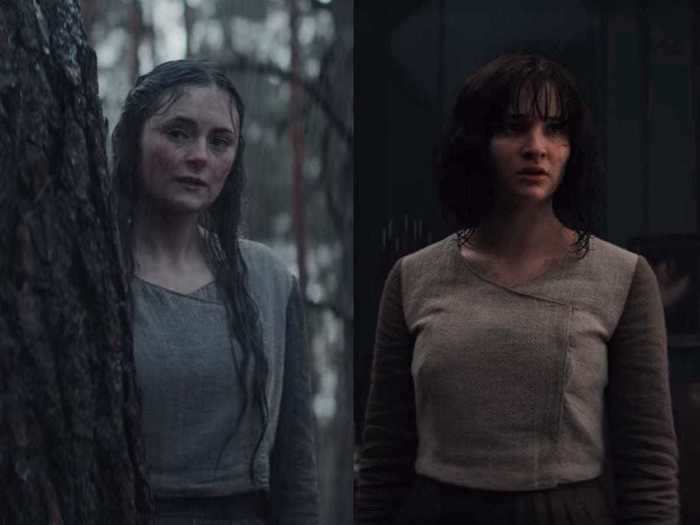
In season three, episode six, Silja brings the imprisoned Martha to Adam. Before turning her over, Silja makes her strip out of her 1800s clothes and down to a nightgown. Martha is then killed by Adam.
In the next episode, we see Silja travel back in time to meet Bartosz (and then birth baby Noah and Agnes). You might not have noticed that Silja is literally wearing the clothes off Martha's back as she sneaks into the Sic Mundus group in the 1800s.
The final dinner scene also contains an important throwback line to Hannah and Ulrich as teenagers.
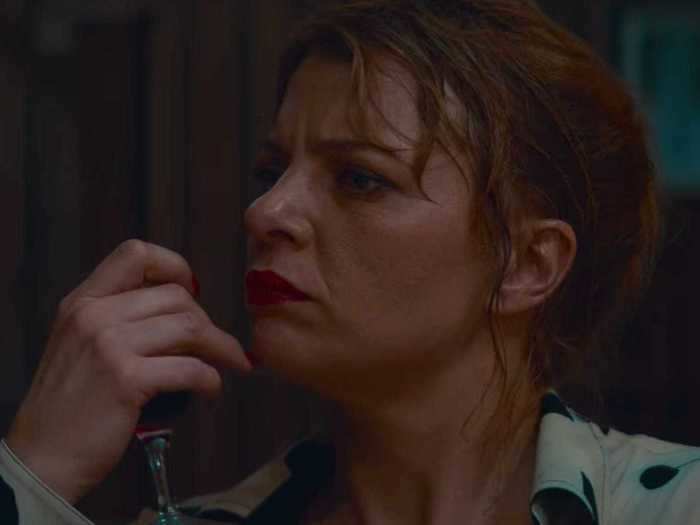
After the power goes out, the six characters at the dinner party have a discussion that almost perfectly mirrors a season one scene.
Regina asks a heavy question: "If the world were to end today, and you only had one wish, what would you wish for?"
Katharina mulls over Regina's question for a moment, then says, "A world without Winden. Let's drink to that."
This whole exchange is almost word-for-word the same thing we watch young Ulrich and young Hannah say in season one, episode three, "Past and Present."
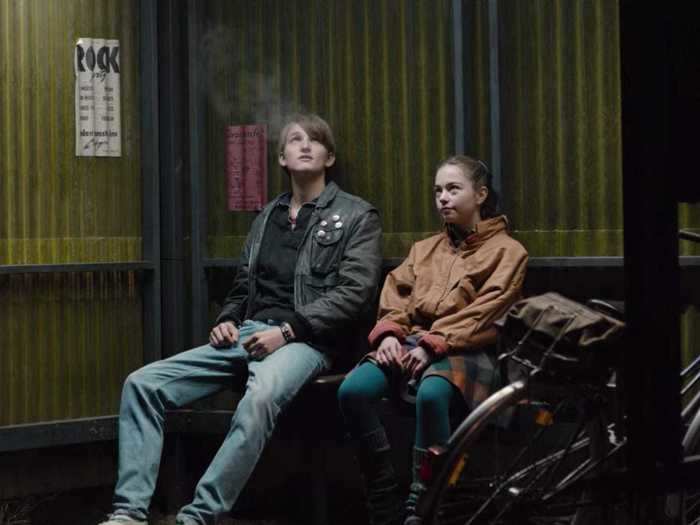
In that episode, Ulrich was sitting and smoking at the bus stop in 1986. Hannah rode her bike up and sat near him. Winden was experiencing one of those flickering-light power surges that marked the use of the wormhole tunnel.
"Is this the apocalypse?" Hannah asked Ulrich. "I thought it would be a lot brighter. And louder."
A few moments later, she asked young Ulrich a similar question to Regina's.
"If the world ended today, and everything started anew, what would you wish for?" she said.
"Easy," Ulrich said. "A world without Winden."
By using the same set of questions and answers in this final dinner scene, which again is presumably the origin world's timeline in 2019, "Dark" was looping itself back to the beginning of its story. Martha and Jonas may have broken the cycle, but there are clearly still lingering parallels between what unfolded in the two corrupted universes and what will now happen in the origin world.
For more on the meaning of this final scene, read Insider's full analysis here.
READ MORE ARTICLES ON
Popular Right Now
Popular Keywords
Advertisement